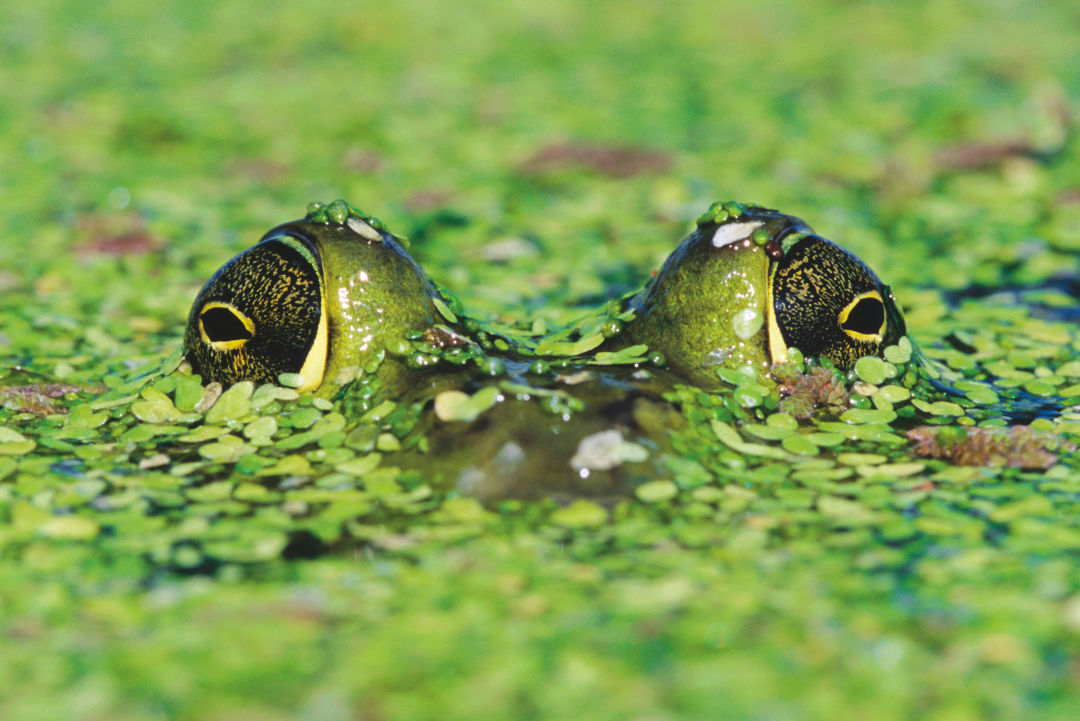In Portland, Bullfrogs Are like the Uninvited Guests Who Crash the Party

Bullfrogs are especially hardy, able to survive in desert areas as well as regions with snowy winters, so it’s no surprise they have proliferated in our damp and mild coastal climate. But should they be here?
Image: Danita Delmont/shutterstock
One drizzly Saturday morning, my son and I were strolling along the edge of a seasonal marsh at Ridgefield National Wildlife Refuge, accompanied by a biologist as part of Clark County’s annual Critter Count field survey. My son suddenly thrust his arm into a thicket of reeds and, proudly, produced a small frog.
The biologist scowled into my son’s open hand. “That’s a bullfrog,” she said. “We can’t have that here.” She placed the blinking frog into a sandwich bag, sealed it, put it in her pocket, and strode on. My son and I stood back, aghast. A biologist killing a frog? Isn’t it their job to protect nature?
It turns out, that’s precisely what she was doing. Bullfrogs are native to the East Coast but were brought to our side of the country sometime in the early 1900s, thanks to their large, meaty hind legs’ viability as a food source. (For those looking to see for themselves, Le Bistro Montage on SE Morrison Street serves them as an appetizer with horseradish cream.) The amphibians are especially hardy, able to survive in desert areas as well as regions with snowy winters, so it’s no surprise they have proliferated in our damp and mild coastal climate.
Bullfrogs aren’t our only unwanted party guests. The Portland metro area has been particularly besieged by fecund invasive species. These beastly carpetbaggers crowd out native plants and animals, damaging the region’s biodiversity and habitat.
“Sometimes somebody will come up with a piranha,” says Rick Boatner, an Oregon Department of Fish and Wildlife invasive species wildlife integrity supervisor, naming another interloper. “We’ve got those turned in to us from the Willamette system every three to four years. They’re the vegetarian kind, but people don’t know that because of the teeth.”
While placing frogs in a plastic bag is perfectly acceptable, according to Boatner, his preferred method of execution would’ve involved Orajel—the canker-sore analgesic.
“You put a one-inch strip on the vent between their legs up to their stomach, and the benzocaine kills them,” Boatner says. “It’s painless.”




